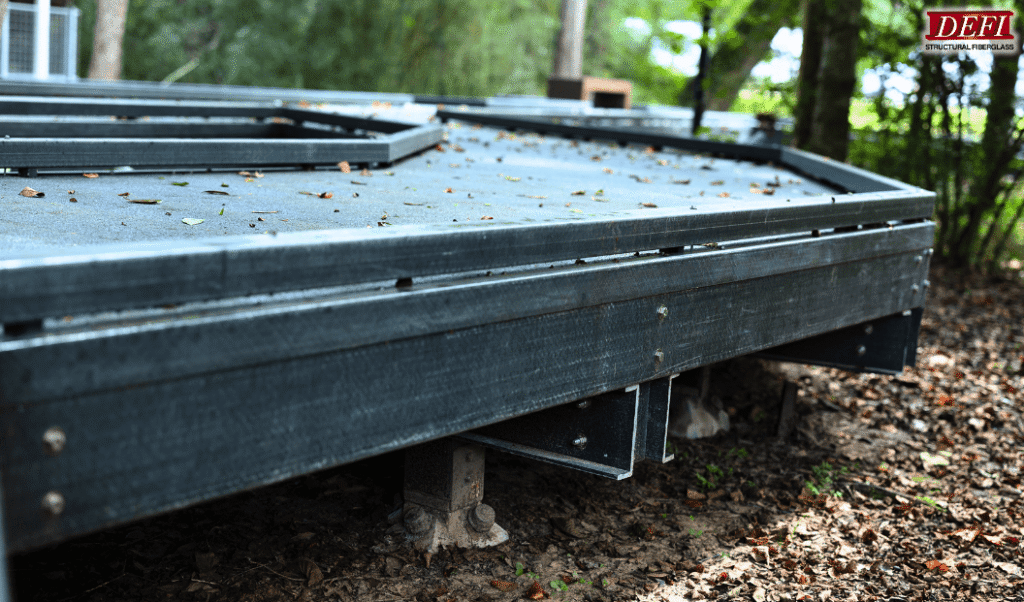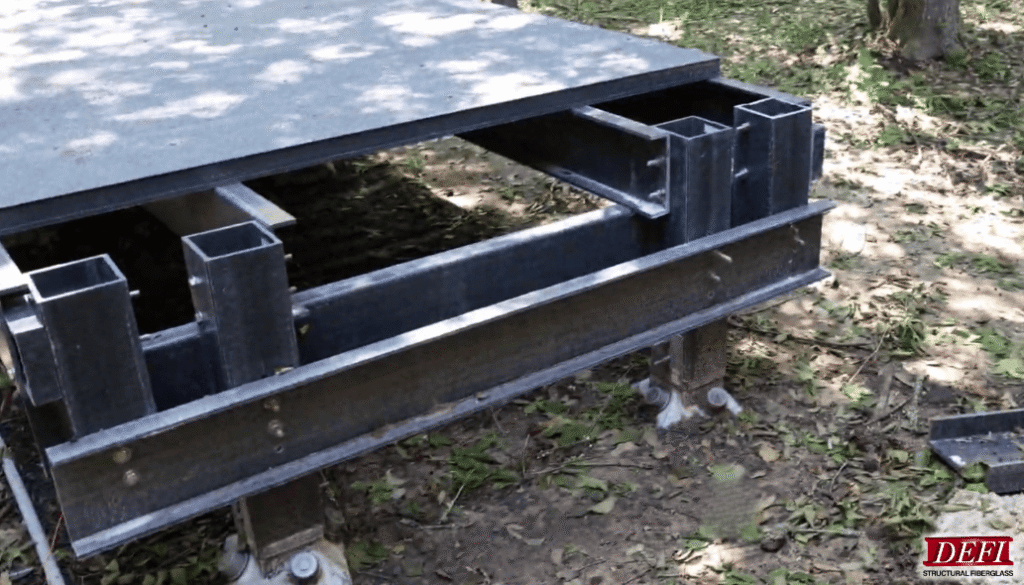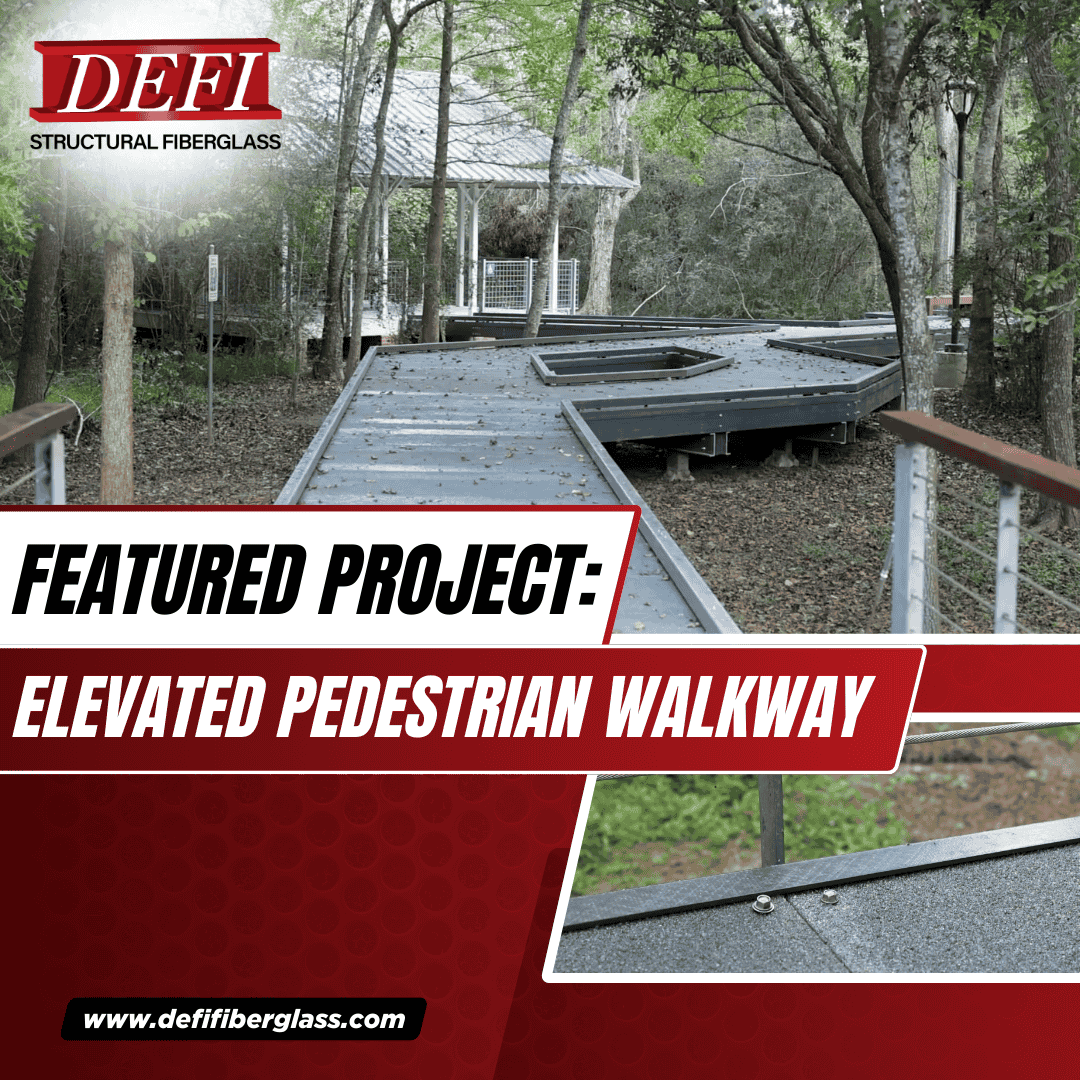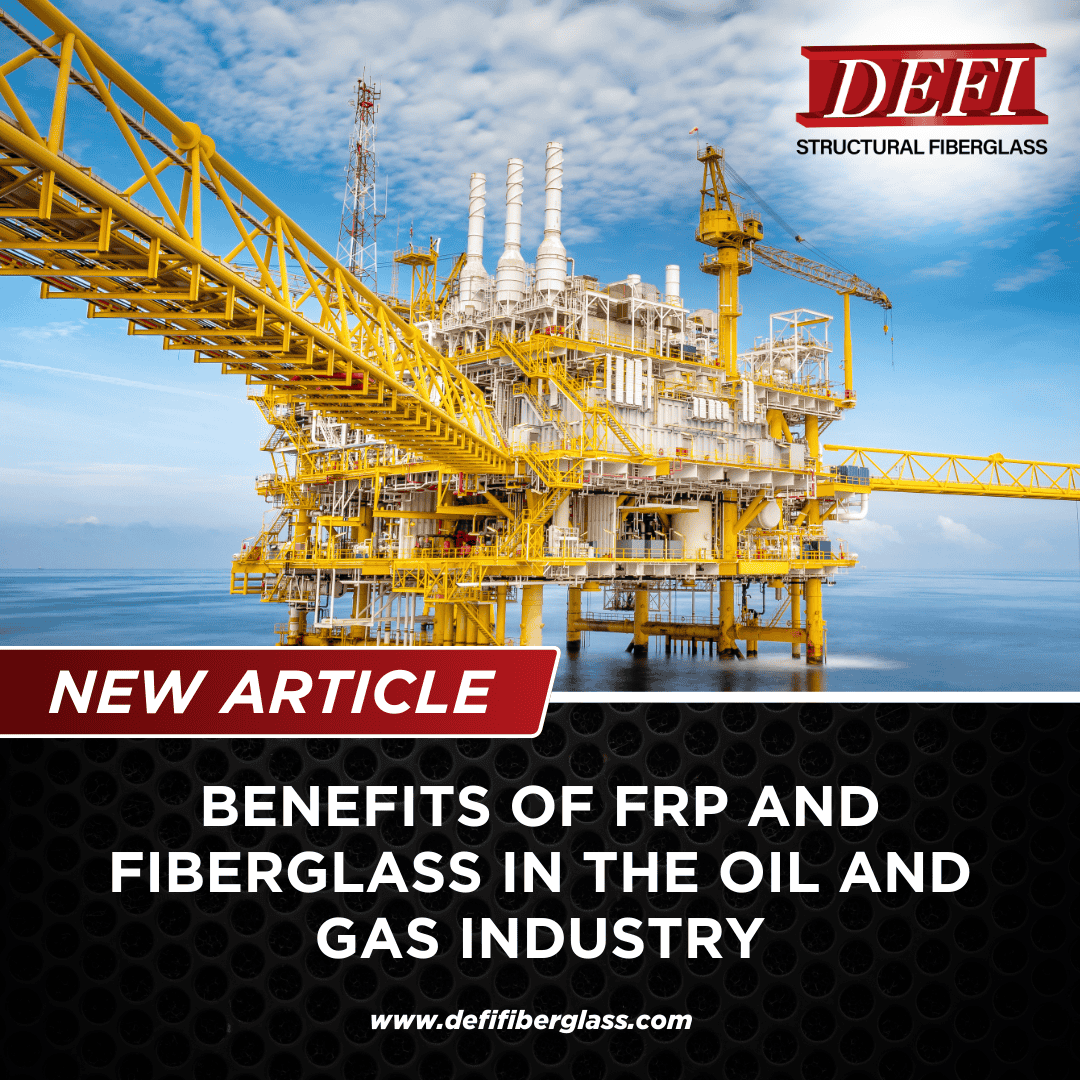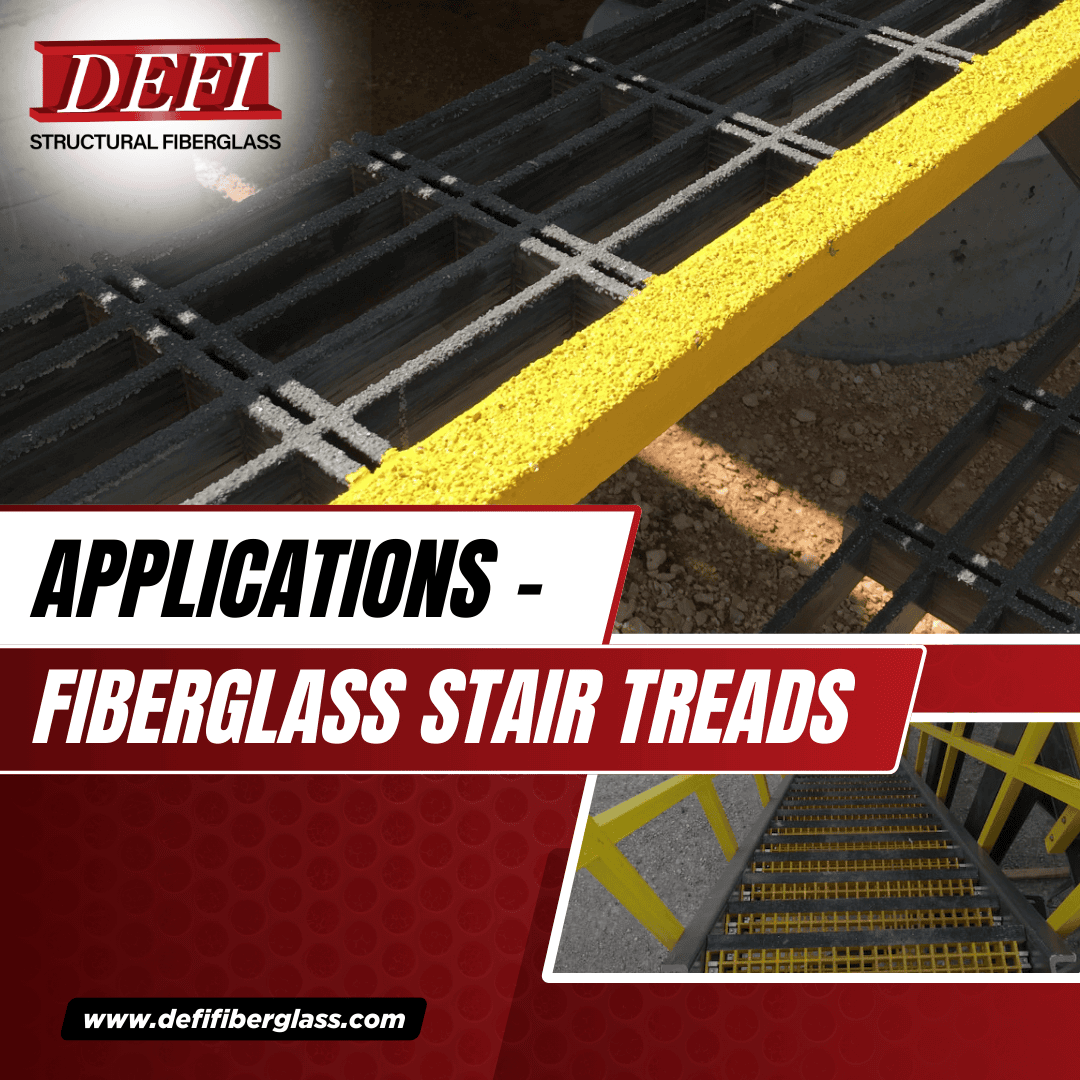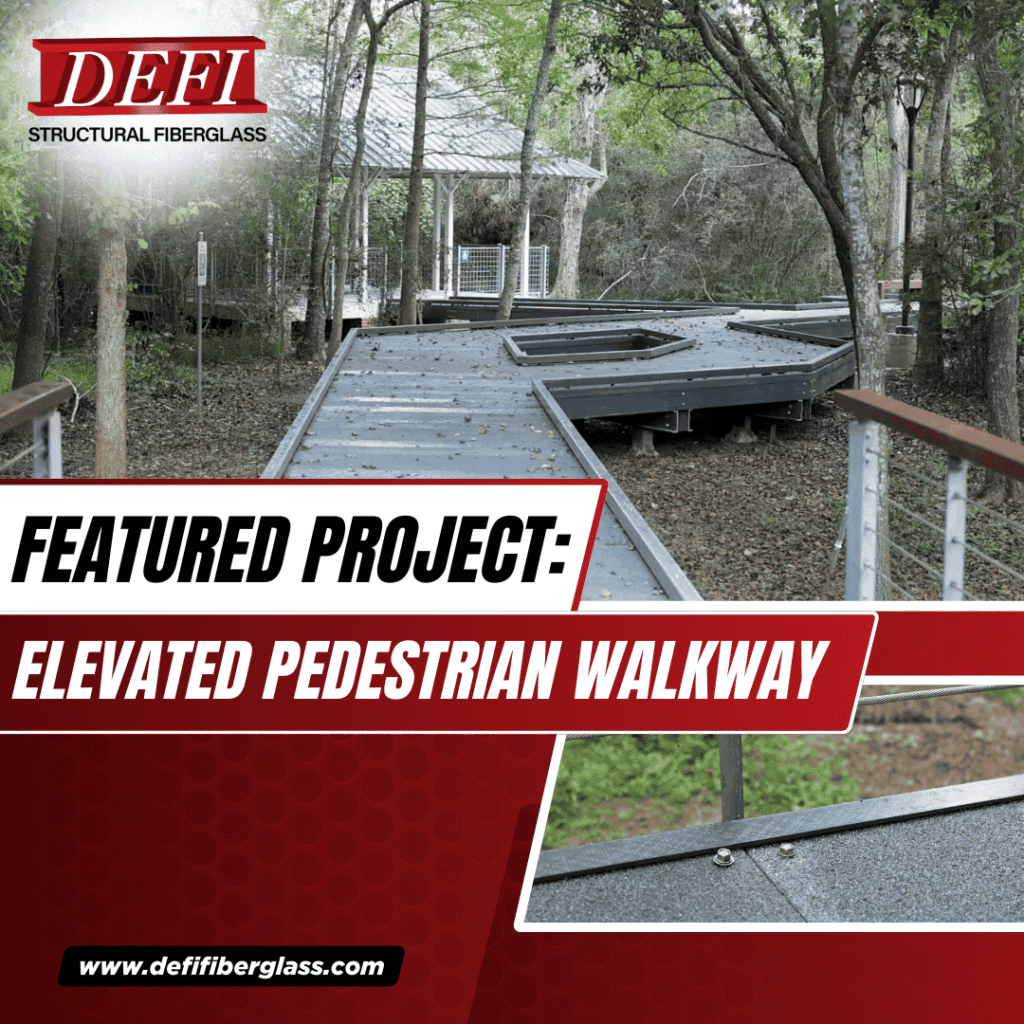
FRP and fiberglass consistently outperform traditional building materials in challenging and harsh conditions. In environments where wood rots over time, FRP stands strong. This was the case for one of our recent projects. A local rest stop needed a wood and plastic composite walkway replaced after standing water and weather conditions took their toll. Our team delivered a custom-built FRP elevated pedestrian walkway that can withstand the humid, wet conditions.
Elevated Pedestrian Walkway Project Details
The rest stop, located in a wetland area, is prone to standing water, which rotted the wood and warped the cheap plastic composite decking. The previous walkway was no longer stable, which was causing safety issues. Our team at DEFI tailored a solution to address these challenges. The FRP substructure was constructed with square tube bases and channel frames. This provided the elevated pedestrian walkway with a lightweight and sturdy foundation. A FRP deckboard was added to provide a slip-resistant walking surface, even in wet conditions. To prevent pedestrians from exiting the walkway and potentially entering dangerous areas, FRP curbing was installed along the edges.
Why FRP Was Right for the Job
Eliminated Maintenance – The walkway, constructed of wood and plastic composite, needed constant maintenance. By switching to FRP, the rest stop has virtually eliminated the need for maintenance, besides the occasional cleaning. FRP and fiberglass will not rot, warp, or corrode, making them a perfect material for this job.
Enhancing Safety – The FRP decking is manufactured with an integrated grit surface. This means it has built-in slip resistance. Unlike slip-resistant coatings that are applied to traditional materials, this will not wear off over time. The grit surface reduces the risk of slips and falls without the need for coatings or anti-slip tape.
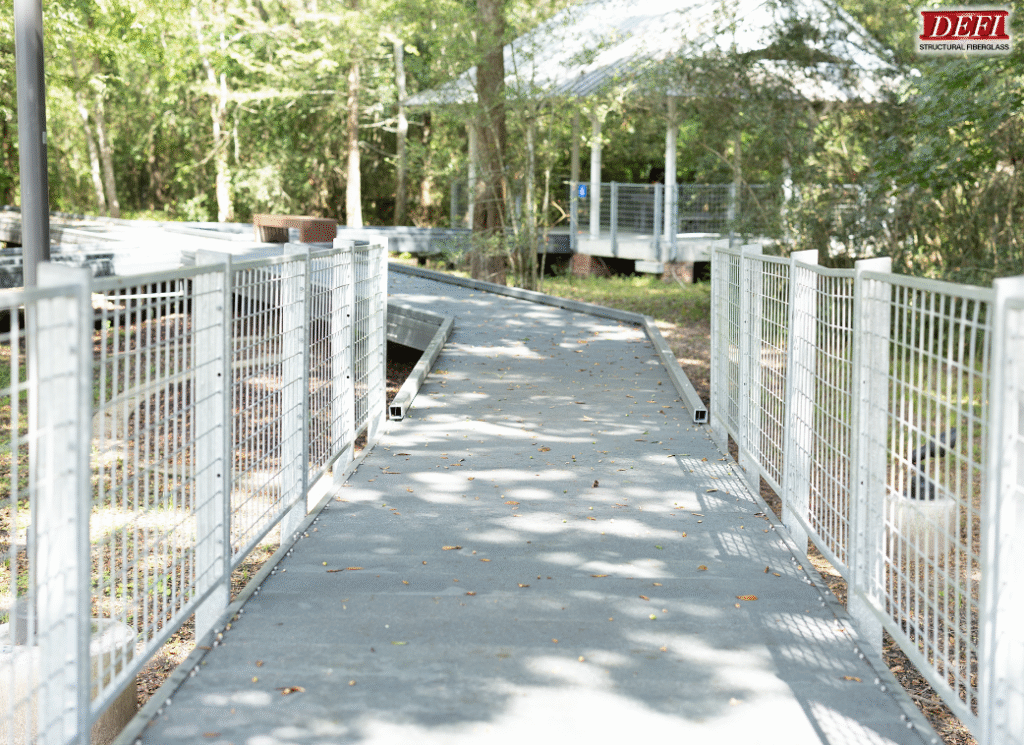
Customized Solutions – Our team completely customized the FRP elevated pedestrian walkway from start to finish. This allowed our client to choose the features, colors, design, and layout while having a new walkway that integrated seamlessly with the existing structures.
Long Lifespan – Because FRP is resistant to weather, corrosion, heavy foot traffic, UV exposure, and chemicals, the elevated pedestrian walkway will last for decades. FRP maintains its appearance and structural integrity over time, unlike traditional materials that degrade.

Cost-Effective Installation – FRP is a lightweight material. It has a higher strength-to-weight ratio than even steel, while only weighing ⅓ as much. Because of its light weight, it’s easier to handle and install. Installation required only basic hand tools, eliminating the need for heavy machinery or specialized equipment.

Why FRP Was Right for the Job
Eliminated Maintenance – The walkway, constructed of wood and plastic composite, needed constant maintenance. By switching to FRP, the rest stop has virtually eliminated the need for maintenance, besides the occasional cleaning. FRP and fiberglass will not rot, warp, or corrode, making them a perfect material for this job.
Enhancing Safety – The FRP decking is manufactured with an integrated grit surface. This means it has built-in slip resistance. Unlike slip-resistant coatings that are applied to traditional materials, this will not wear off over time. The grit surface reduces the risk of slips and falls without the need for coatings or anti-slip tape.
Customized Solutions – Our team completely customized the FRP elevated pedestrian walkway from start to finish. This allowed our client to choose the features, colors, design, and layout while having a new walkway that integrated seamlessly with the existing structures.
Long Lifespan – Because FRP is resistant to weather, corrosion, heavy foot traffic, UV exposure, and chemicals, the elevated pedestrian walkway will last for decades. FRP maintains its appearance and structural integrity over time, unlike traditional materials that degrade.
Cost-Effective Installation – FRP is a lightweight material. It has a higher strength-to-weight ratio than even steel, while only weighing ⅓ as much. Because of its light weight, it’s easier to handle and install. Installation required only basic hand tools, eliminating the need for heavy machinery or specialized equipment.

This elevated pedestrian walkway is a clear example of how beneficial FRP and fiberglass can be, especially in tough, outdoor applications. The durability, added safety, and easy installation of FRP made it the perfect solution for this project.
Our team can create customized fiberglass structures to fit your exact specifications. Contact us today to discuss your project and find the perfect solution for your needs.
Check out our resources page here.
Follow us on LinkedIn!
